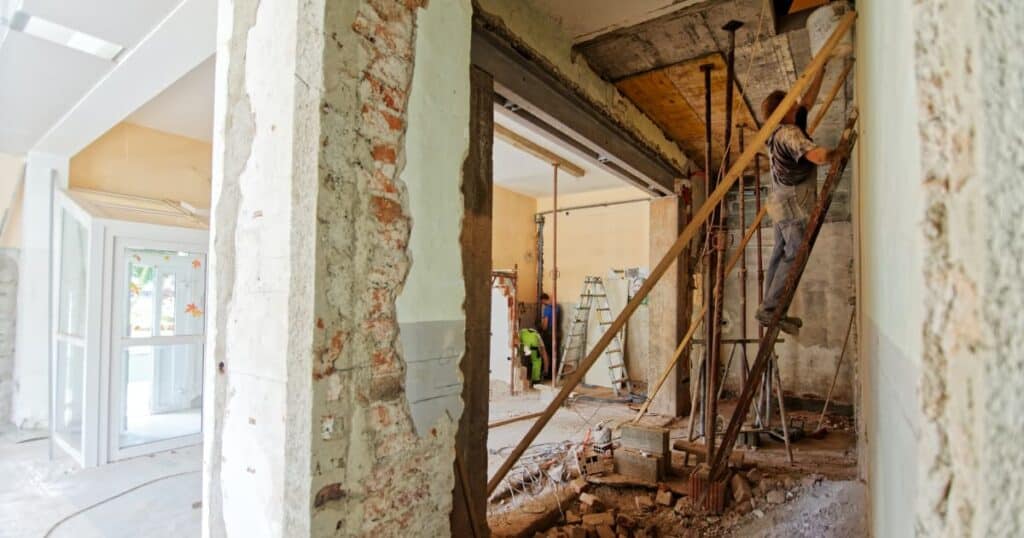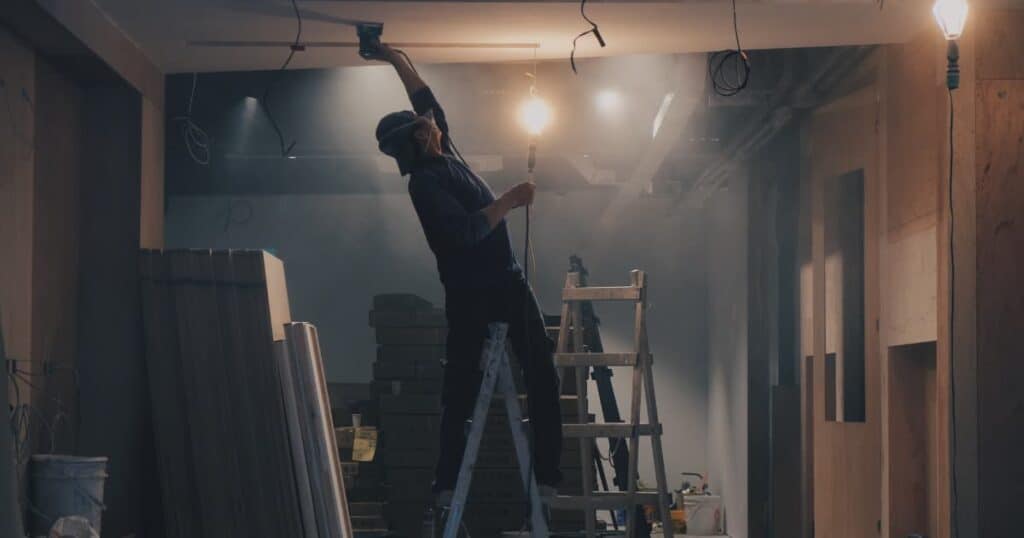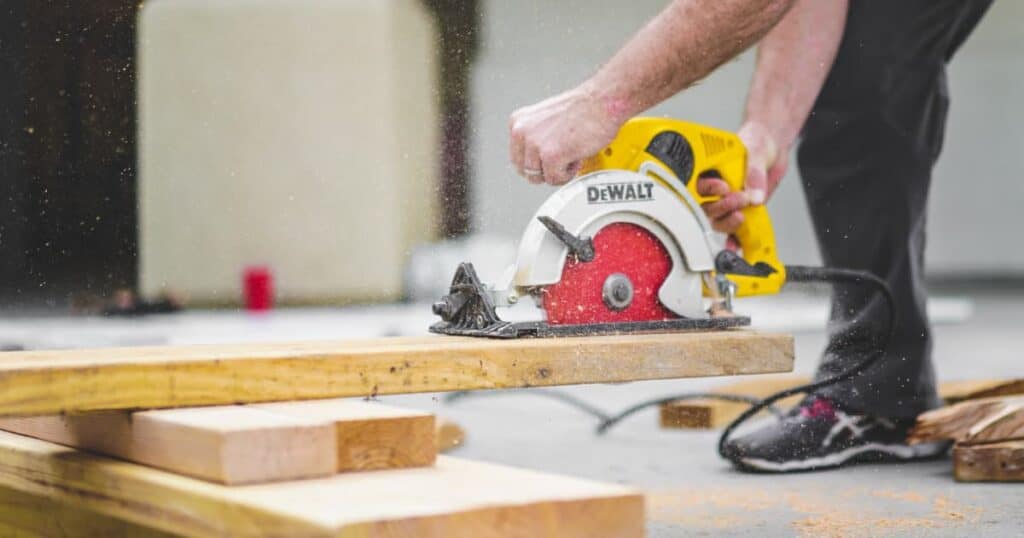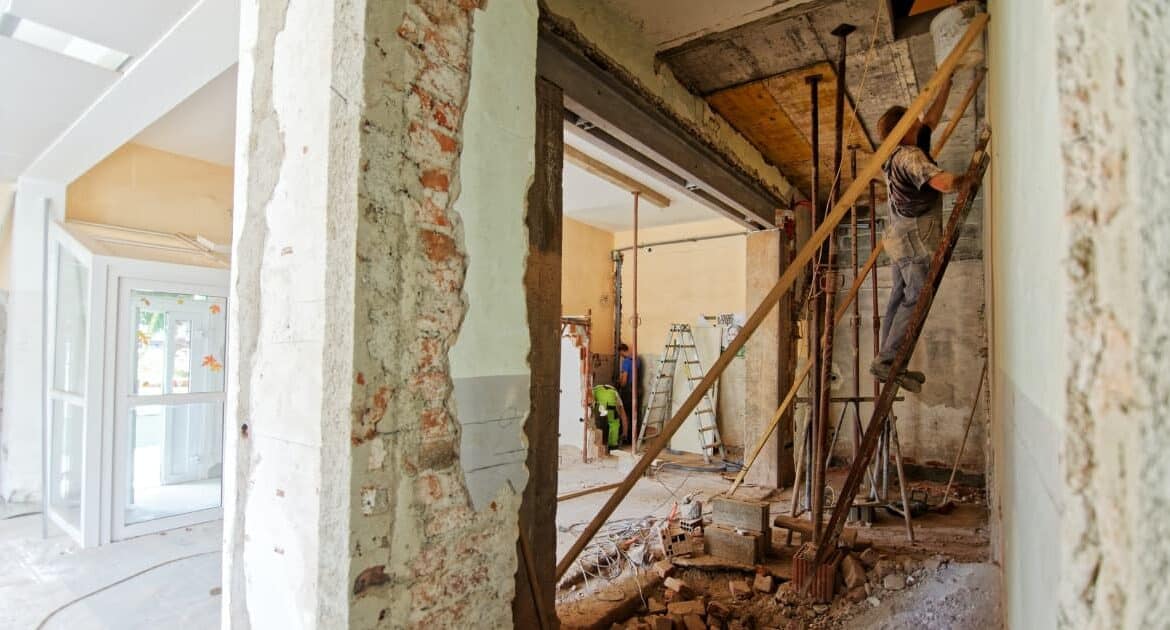
It’s often the case that these terms are used interchangeably, however; renovation, refurbishment, and retrofit all have individual specific meanings which are different from one and other.
If you are having work done on your house, or you are considering changing up the interior, it’s worth understanding the difference – and don’t worry, we’ve got you covered in this guide where we’ll be discussing what renovation, refurbishment, and retrofit actually mean and what the key differences are.
Renovations
Speaking broadly, renovation means to return something to a good state of repair. The term renovation is most predominantly used when speaking about home repairs and construction, and it often refers to the improvement or modernisation of an old room, house, or building.
It’s common for people to want to rework sections of their properties that they find have become outdated and this usually falls under the category of renovation. It’s also common for people to purchase run-down properties with the aim of renovating them to increase their value. There are typically two main types of home renovation: structural renovation, and cosmetic renovation.
Structural renovation can often involve one or more of the following:
- Loft & cellar conversions
- Home extensions
- Re-wiring & re-plumbing
- Redesign of floor plans
Cosmetic renovations are typically more common and can involve the following:
- Adding new flooring
- Painting or adding wallpaper
- Light landscaping
- Updating fixtures and fittings
Refurbishments

Refurbishment centres around improving and updating a property by cleaning and decorating. Whilst refurbishment may cross over with some elements of cosmetic renovation, it purely describes the action of updating the interior of properties and isn’t usually used to describe any major external construction work that is taking place.
Popular refurbishments include updating the décor of a room with new furniture and new cosmetic decorations. Replace old fixtures and fittings may also fall under the category of refurbishments, as well as taking measures to make a property more sustainable and energy efficient, although, this may cross over with aspects of retrofitting.
Retrofits
The act of retrofitting refers to the implementation of a fixture, component, or feature not originally put in place when the property was initially constructed. One of the most common examples of retrofitting is the installation of new building systems, such as heating or air conditioning.
Retrofits have become more commonplace in recent years, which has been in line with the global push towards more sustainable and energy efficient alternatives. The installation of solar panels and water conservation fittings are some popular examples of how homeowners are retrofitting their properties with more sustainable and energy efficient alternatives to regular housing features. Other examples of common retrofitting techniques include the following:
- Insulation and ventilation systems
- Installation of double or triple glazing windows
- Low energy lighting fixtures
- Installation of floor insulation
- Draft proof doors
- External cladding
- Cavity wall insulation
- Thermal energy storage systems
- Installation of high efficiency condensing boilers
Key differences between renovations, refurbishments and retrofits

While many building projects include elements of renovation, refurbishment, and retrofitting, there are several key differences between them. The best way of recognising the differences is by being able to define each term individually.
Refurbishment refers to the process of returning the aesthetics and looks of a room or building to a modern state through cleaning and re-equipping. Refurbishment implies that the building or room was originally in good condition, and the act of refurbishment can involve returning to that original condition.
Renovation takes this a step further however, by integrating physical changes to the building and structure into account. This often includes structural changes such as extensions, as well as cosmetic redesigns such as flooring.
Retrofitting refers to the process of replacing, updating, or simply changing systems and technology within a building, usually in order to make better use of renewable energy sources and to have more sustainable methods put into place.
Whilst there is a lot of crossover between the three processes, they do all have a specific meaning, and it’s important to recognise those differences if you need some construction work doing on your house.

